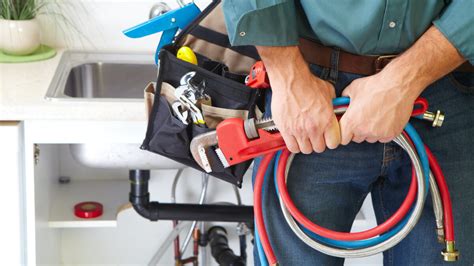When it comes to maintaining the functionality of a building, both steamfitters and plumbers play crucial roles. However, their areas of expertise and responsibilities differ significantly. This article delves into the key distinctions between these two occupations, providing clear insights for those interested in pursuing a career in either field.

Job Responsibilities
Steamfitters
- Install, maintain, and repair piping systems that convey steam, hot water, and other fluids
- Weld, braze, and solder pipes and fittings
- Repair and replace valves, steam traps, and other system components
- Design and install new piping systems as needed
- Perform energy audits to improve system efficiency
Plumbers
- Install, maintain, and repair piping systems that convey water, gas, and waste
- Diagnose and resolve plumbing issues
- Repair and replace faucets, toilets, sinks, and other fixtures
- Install and maintain water heaters, boilers, and other appliances
- Perform plumbing inspections to ensure code compliance
Skills and Requirements
Steamfitters
- High school diploma or equivalent
- Apprenticeship training program (4-5 years)
- Strong welding, brazing, and soldering skills
- Knowledge of steam and hot water heating systems
- Basic understanding of thermodynamics
Plumbers
- High school diploma or equivalent
- Apprenticeship training program (4-5 years)
- Proficiency in plumbing tools and techniques
- Knowledge of plumbing codes and regulations
- Ability to diagnose and resolve plumbing issues
Education and Training
Both steamfitters and plumbers typically undergo an apprenticeship program that combines classroom instruction with on-the-job training. These programs provide the necessary skills and knowledge to perform the job effectively.
Steamfitter Apprenticeship
- Typically lasts 4-5 years
- Includes classroom instruction in welding, brazing, soldering, steam systems, and thermodynamics
- Provides hands-on experience in installing, maintaining, and repairing piping systems
Plumber Apprenticeship
- Typically lasts 4-5 years
- Includes classroom instruction in plumbing theory, codes, and regulations
- Provides hands-on experience in plumbing installations, repairs, and maintenance
Career Outlook
According to the U.S. Bureau of Labor Statistics, the job outlook for both steamfitters and plumbers is expected to grow faster than the average for all occupations over the next decade. This growth is driven by the increasing demand for skilled tradespeople in the construction and maintenance industries.
Steamfitters
- Median annual salary: $58,370
- Projected job growth: 14% over the next decade
Plumbers
- Median annual salary: $56,330
- Projected job growth: 10% over the next decade
Benefits and Challenges
Steamfitters
Benefits:
- High earning potential
- Steady employment
- Opportunities for advancement
- Job security in the construction industry
Challenges:
- Physically demanding work
- Exposure to high-temperature equipment
- Potential for burns and other injuries
Plumbers
Benefits:
- High earning potential
- Steady employment
- Wide range of job opportunities
- Job security in the construction and maintenance industries
Challenges:
- Physically demanding work
- Exposure to chemicals and hazardous materials
- Potential for injuries from falls or electrocution
Common Mistakes to Avoid
Steamfitters
- Failing to properly weld, braze, or solder pipes and fittings
- Installing piping systems without proper planning and design
- Ignoring safety precautions when working with high-temperature equipment
Plumbers
- Misdiagnosing plumbing issues
- Using inappropriate plumbing materials or techniques
- Failing to obtain proper permits or inspections
Why It Matters
Both steamfitters and plumbers play a vital role in ensuring the safety and comfort of our homes, workplaces, and public buildings. By understanding the differences between these two occupations, individuals can make informed decisions about their career paths and contribute to the well-being of society.
Conclusion
Steamfitters and plumbers are essential skilled tradespeople who perform distinct but equally important roles in the construction and maintenance industries. By understanding the differences between their responsibilities, skills, and career paths, individuals can make informed decisions about their professional aspirations and contribute to the efficiency and safety of our built environment.
Table 1: Steamfitter vs. Plumber Job Responsibilities
| Task | Steamfitter | Plumber |
|---|---|---|
| Install piping systems | Yes | Yes |
| Maintain piping systems | Yes | Yes |
| Repair piping systems | Yes | Yes |
| Weld, braze, and solder pipes | Yes | No |
| Diagnose plumbing issues | No | Yes |
| Install fixtures | No | Yes |
| Perform energy audits | Yes | No |
| Ensure code compliance | Yes | Yes |
Table 2: Steamfitter vs. Plumber Skills
| Skill | Steamfitter | Plumber |
|---|---|---|
| Welding | Yes | No |
| Brazing | Yes | No |
| Soldering | Yes | No |
| Steam systems knowledge | Yes | No |
| Plumbing codes and regulations | No | Yes |
| Plumbing fixtures knowledge | No | Yes |
Table 3: Steamfitter vs. Plumber Education and Training
| Qualification | Steamfitter | Plumber |
|---|---|---|
| High school diploma | Yes | Yes |
| Apprenticeship program | Yes | Yes |
| Classroom instruction | Yes | Yes |
| Hands-on experience | Yes | Yes |
Table 4: Steamfitter vs. Plumber Career Outlook
| Occupation | Median Annual Salary | Projected Job Growth |
|---|---|---|
| Steamfitter | $58,370 | 14% |
| Plumber | $56,330 | 10% |
